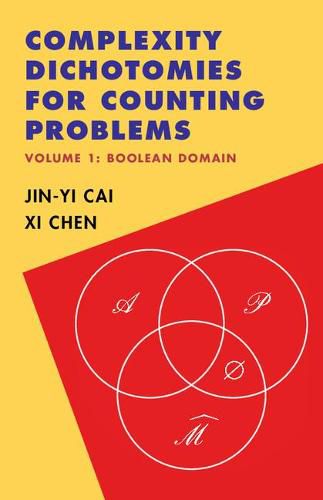Readings Newsletter
Become a Readings Member to make your shopping experience even easier.
Sign in or sign up for free!
You’re not far away from qualifying for FREE standard shipping within Australia
You’ve qualified for FREE standard shipping within Australia
The cart is loading…






Complexity theory aims to understand and classify computational problems, especially decision problems, according to their inherent complexity. This book uses new techniques to expand the theory for use with counting problems. The authors present dichotomy classifications for broad classes of counting problems in the realm of P and NP. Classifications are proved for partition functions of spin systems, graph homomorphisms, constraint satisfaction problems, and Holant problems. The book assumes minimal prior knowledge of computational complexity theory, developing proof techniques as needed and gradually increasing the generality and abstraction of the theory. This volume presents the theory on the Boolean domain, and includes a thorough presentation of holographic algorithms, culminating in classifications of computational problems studied in exactly solvable models from statistical mechanics.
$9.00 standard shipping within Australia
FREE standard shipping within Australia for orders over $100.00
Express & International shipping calculated at checkout
Complexity theory aims to understand and classify computational problems, especially decision problems, according to their inherent complexity. This book uses new techniques to expand the theory for use with counting problems. The authors present dichotomy classifications for broad classes of counting problems in the realm of P and NP. Classifications are proved for partition functions of spin systems, graph homomorphisms, constraint satisfaction problems, and Holant problems. The book assumes minimal prior knowledge of computational complexity theory, developing proof techniques as needed and gradually increasing the generality and abstraction of the theory. This volume presents the theory on the Boolean domain, and includes a thorough presentation of holographic algorithms, culminating in classifications of computational problems studied in exactly solvable models from statistical mechanics.